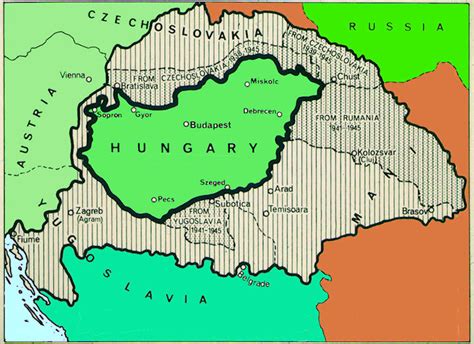Explore the rich history of Anatolia, from early civilizations to the foundation of the Turkish Republic. Learn about the Seljuks, Ottoman Empire, and modernization.
Early Civilizations in Anatolia
Contents
The history of Anatolia dates back to the ancient times, with the region being the home of some of the earliest civilizations in the world. From the Hittites to the Phrygians, the early inhabitants of Anatolia played a significant role in shaping the history of the region. These civilizations were known for their advanced architecture, art, and agricultural practices, which set them apart from other ancient societies. The development of city-states such as Troy and Ephesus also contributed to the cultural and economic growth of Anatolia during this period. The remnants of these early civilizations can still be seen in the archaeological sites scattered throughout the region.
One of the most notable early civilizations in Anatolia was the Hittite Empire, which rose to power around 1600 BC. The Hittites were known for their advanced military technology and their skill in metalworking. They were also among the first ancient societies to use a form of written language known as cuneiform. The Hittite Empire reached its peak under the rule of King Suppiluliuma I, who expanded the empire through diplomacy and military conquest. The Hittites also played a crucial role in shaping the religious practices of the region, with their pantheon of gods influencing later civilizations in Anatolia.
Another prominent early civilization in Anatolia was the Phrygian Kingdom, which prospered during the Iron Age. The Phrygians were known for their skilled metalworking, particularly in the production of intricate jewelry and decorative objects. The famous King Midas, known for his legendary golden touch, is one of the most well-known figures from Phrygian history. The Phrygians also left behind a legacy of impressive stone monuments, such as the tomb of King Midas, which showcase their architectural prowess.
The early civilizations of Anatolia played a crucial role in laying the foundations for the cultural and historical development of the region. Their achievements in art, architecture, and technology continue to be a source of fascination for historians, archaeologists, and enthusiasts of ancient history.
Arrival of the Seljuks
The arrival of the Seljuks in Anatolia marked a significant turning point in the region’s history. In the 11th century, the Seljuks, a Turkic tribal confederation, began migrating from Central Asia towards the Middle East. Led by Tughril Beg, the Seljuks defeated the Byzantine Empire at the Battle of Manzikert in 1071, opening the door for their expansion into Anatolia.
Following their victory, the Seljuks established the Sultanate of Rum, with its capital in Iconium (modern-day Konya). This period saw the rapid Turkification of Anatolia, as the Seljuks encouraged the settlement of Turkic tribes and the conversion of the local population to Islam.
Under the Seljuks, Anatolia experienced a flourishing of art, architecture, and literature, with many iconic landmarks, such as the Alaeddin Mosque and the Sultanhani caravanserai, being built during this time. This era also witnessed significant advancements in science, medicine, and astronomy, as Anatolia became a center for learning and scholarship.
However, the Seljuk rule in Anatolia was not without its challenges. Internal power struggles, external threats from the Crusaders, and Mongol invasions all contributed to the eventual decline of the Seljuk Sultanate of Rum. Nevertheless, the arrival of the Seljuks left a lasting impact on Anatolia, shaping its cultural, religious, and political landscape for centuries to come.
Rise of the Ottoman Empire
Rise of the Ottoman Empire
The Rise of the Ottoman Empire is a fascinating period in the history of Turkey, marked by the meteoric ascent of a small principality to a powerful empire that would endure for over six centuries. The Ottoman Empire emerged in the 13th century, founded by Osman I, and steadily grew in size and influence, eventually becoming one of the most powerful states in the world.
One key factor in the rise of the Ottoman Empire was its strategic location at the crossroads of Europe, Asia, and Africa. This position allowed the Ottomans to control major trade routes and expand their territory through military conquests. They also benefited from a strong centralized government, a highly skilled military, and a diverse and tolerant society that welcomed people of different cultures and religions.
Over the centuries, the Ottoman Empire expanded its territory through a series of successful military campaigns, capturing key cities and establishing a vast network of provinces and vassal states. The Ottomans also developed a sophisticated administrative system and implemented various reforms to maintain stability and prosperity within their empire.
As the Ottoman Empire continued to grow, it became a major force in global politics, shaping the history of Europe, the Middle East, and beyond. Its influence extended into various fields, including art, architecture, and literature, leaving a lasting legacy that continues to be celebrated and studied today.
The rise of the Ottoman Empire had a profound impact on the world, and its history is filled with drama, intrigue, and triumph. From its humble beginnings to its eventual decline, the Ottoman Empire remains a compelling and influential chapter in the story of Turkey and the broader world.
Modernization and Reforms
During the late 18th and early 19th centuries, the Ottoman Empire began to undergo a period of modernization and reform. This period was characterized by the introduction of new technologies, political changes, and social reforms aimed at modernizing the empire and keeping up with the developments in Europe. One of the key factors driving this modernization was the growing influence of European powers and the need to compete with them on a global scale.
Under the leadership of Sultan Selim III, the Ottoman Empire implemented a series of reforms known as the Tanzimat. These reforms aimed to modernize the administration, legal system, and education, as well as to improve the rights of non-Muslim citizens. The Tanzimat reforms also sought to create a more centralized government and to promote economic development through the introduction of new technologies and infrastructure.
Another important aspect of the modernization and reforms in the Ottoman Empire was the introduction of the Constitution of 1876. This marked a significant shift towards a more liberal and constitutional government, granting more rights to the citizens and establishing a bicameral parliament. Although the constitution was short-lived and faced significant challenges, it represented a major step towards modernization and reform in the empire.
Furthermore, the Ottoman Empire undertook efforts to modernize its military and industrial capabilities, with the establishment of new factories and the introduction of European military tactics and technology. This push towards modernization and reform was driven by the desire to maintain the empire’s strength and independence in the face of increasing pressure from European powers.
Foundation of the Turkish Republic
The foundation of the Turkish Republic can be traced back to the aftermath of World War I, when the Ottoman Empire collapsed and the country was occupied by foreign powers. Seeking to establish a modern, secular state, Mustafa Kemal Atatürk led the Turkish War of Independence against the occupying forces and local militias. After a series of military victories, the Treaty of Lausanne was signed in 1923, which recognized the sovereignty of the newly-formed Turkish Republic.
The Republic of Turkey was officially established on October 29, 1923, with Mustafa Kemal Atatürk as its first president. Atatürk initiated a series of reforms aimed at modernizing the country and transforming Turkish society. These reforms included the adoption of a new alphabet, the abolition of the caliphate, and the granting of women’s suffrage.
One of the most significant changes brought about by the foundation of the Turkish Republic was the establishment of a secular government, separating the Islamic tradition from the political system. Atatürk believed that the future of Turkey lay in Westernization and secularism, and his policies aimed to create a more modern and progressive society.
The foundation of the Turkish Republic also brought about a shift in the country’s geopolitical orientation, as it sought to align itself with the Western powers. This marked a departure from the traditional Ottoman policies and established Turkey as a key player in the Middle East and the Balkans.
In conclusion, the foundation of the Turkish Republic was a watershed moment in the history of the country, marking the beginning of a new era of modernization and reform. The legacy of Mustafa Kemal Atatürk and the founding principles of the Republic continue to shape Turkey’s identity and its role in the world today.














